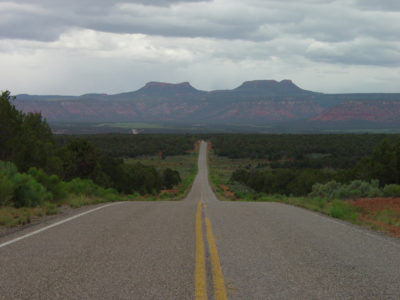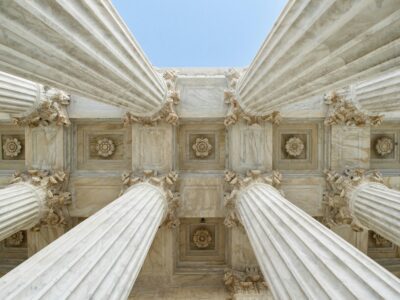Bears Ears: A Monumental End to the Obama Era
Will the Antiquities Act survive the new administration?
With one week left in his second term, President Obama’s “monumental” legacy is again at the forefront. Just yesterday, the President expanded, by proclamation, the Cascade-Siskiyou National Monument in Oregon and the California Coastal National Monument, and created three additional national monuments: the Birmingham Civil Rights National Monument and the Freedom Riders National Monument in Alabama, and the Reconstruction Era National Monument in South Carolina.
All of these proclamations were made under the Antiquities Act, which allows the President to reserve “historic landmarks, historic and prehistoric structures, and other objects of historic or scientific interest” on federal land as national monuments. (Within the last few months, Eric Biber and Dan Farber have posted here about recent and not-so-recent uses of the Antiquities Act.)
Two weeks ago, on December 28, President Obama also created the Bears Ears National Monument in southeastern Utah — a 1.35 million acre area that includes “[a]bundant rock art, ancient cliff dwellings, ceremonial sites, and countless other artifacts” and land that is “profoundly sacred to many Native American tribes, including the Ute Mountain Ute Tribe, Navajo Nation, Ute Indian Tribe of the Uintah Ouray, Hopi Nation, and Zuni Tribe.” It is an area with magnificent landscapes, rich geologic history, and diverse desert ecosystems.

The Bears Ears announcement was met with a flood of strong reactions, both positive and negative. It comes 20 years after the other controversial Antiquities Act proclamation in Utah — in 1996, Bill Clinton withdrew a 1.9 million acre area in southern Utah to create the Grand Staircase-Escalante National Monument.
In my natural resources law class, I talk about how the Antiquities Act has frequently been used by presidents during disputes over public lands management as a way of placing pressure on Congress to act, eventually leading to compromise. When Teddy Roosevelt made the Grand Canyon a National Monument, a court upheld the action, and Congress later made it a National Park. When FDR created the Jackson Hole National Monument, after several years of political fighting, Congress incorporated it into the Grand Teton National Park — but with the price that no more national monuments could be created by the President in Wyoming. Jimmy Carter followed the pattern by reserving enormous areas of Alaska as a national monument, effectively putting development on hold until compromise legislation to cover public lands allocation in Alaska was passed in 1980. No court has ever struck down a national monument designation, although opponents of the Antiquities Act continue to press their case.
Whatever one can say about this push-and-pull between Congress and the executive, this arrangement hasn’t really worked since. Contempt for the Grand Staircase-Escalante National Monument festers among political leaders in Utah, who after two decades have never moved on. In 2012, when the state passed the (clearly unconstitutional, in my view, and in the view of Bob Keiter and John Ruple at the University of Utah) Utah Transfer of Public Lands Act, the legislature made a point of indicating it was OK with federal control of the national parks in the state and other national monuments, but that it wanted the Grand Staircase undone. Rob Bishop, the most senior member of Utah’s House delegation and the Chair of the Natural Resources Committee since 2015, has made the Antiquities Act one of his central issues.
But now Rep. Bishop and others are going further. Even before Obama created the Bears Ears monument, Bishop met with the Trump transition team to try and convince them to take more drastic action — claiming that the new President should unilaterally decide to revoke national monument designations. No President has ever done this. As far back as 1938, FDR’s Attorney General concluded that the Antiquities Act only confers authority to create national monuments; undoing them requires an Act of Congress. A CRS memo from December 2016 explored this issue, noting some limited precedent for reducing the size of monuments — however, the downsizing in question has always been done in connection with the Antiquities Act’s language that calls for national monuments to be “confined to the smallest area compatible with the proper care and management of the objects to be protected.” 54 U.S.C. 320301(b).
If Bishop has Trump’s ear on Bears Ears, that authority will be put to the test, and it will be heavily litigated. It’s important to note that the decision, by law, is the President’s alone, although others like Ryan Zinke, Trump’s nominee for Secretary of Interior, may be influential. Zinke said during his House re-election campaign in October that he “will never agree with the transfer or sale of public lands,” but has a 3% score from the League of Conservation Voters, and recently voted to relax Congress’ accounting rules for land transfers.
Perhaps the greatest irony is that critics of Obama’s monuments, such as Utah House Speaker Greg Hughes, call them a “federal land grab.” The Antiquities Act only covers land owned or controlled by the federal government. It has been grabbed from no state or private party. The Bears Ears proclamation — just as Clinton’s Grand Staircase proclamation — protects valid existing rights in the area. What creating national monuments does do is protect against future efforts to “grab” short-term, private profits through the exploitation of resources in an area that is worth more — to Native Americans and to others who enjoy it — in its present condition.
Reader Comments
One Reply to “Bears Ears: A Monumental End to the Obama Era”
Comments are closed.







California’s Bullet Train is Hurtling Toward a Multibillion-dollar Overun:
“…….California’s bullet train could cost taxpayers 50% more than estimated — as much as $3.6 billion more. And that’s just for the first 118 miles through the Central Valley, which was supposed to be the easiest part of the route between Los Angeles and San Francisco. A confidential Federal Railroad Administration risk analysis, obtained by The Times, projects that building bridges, viaducts, trenches and track from Merced to Shafter, just north of Bakersfield, could cost $9.5 billion to $10 billion, compared with the original budget of $6.4 billion.
The federal document outlines far-reaching management problems: significant delays in environmental planning, lags in processing invoices for federal grants and continuing failures to acquire needed property. The California High-Speed Rail Authority originally anticipated completing the Central Valley track by this year, but the federal risk analysis estimates that that won’t happen until 2024, placing the project seven years behind schedule…….”
http://www.latimes.com/local/california/la-me-bullet-cost-overruns-20170106-story.html